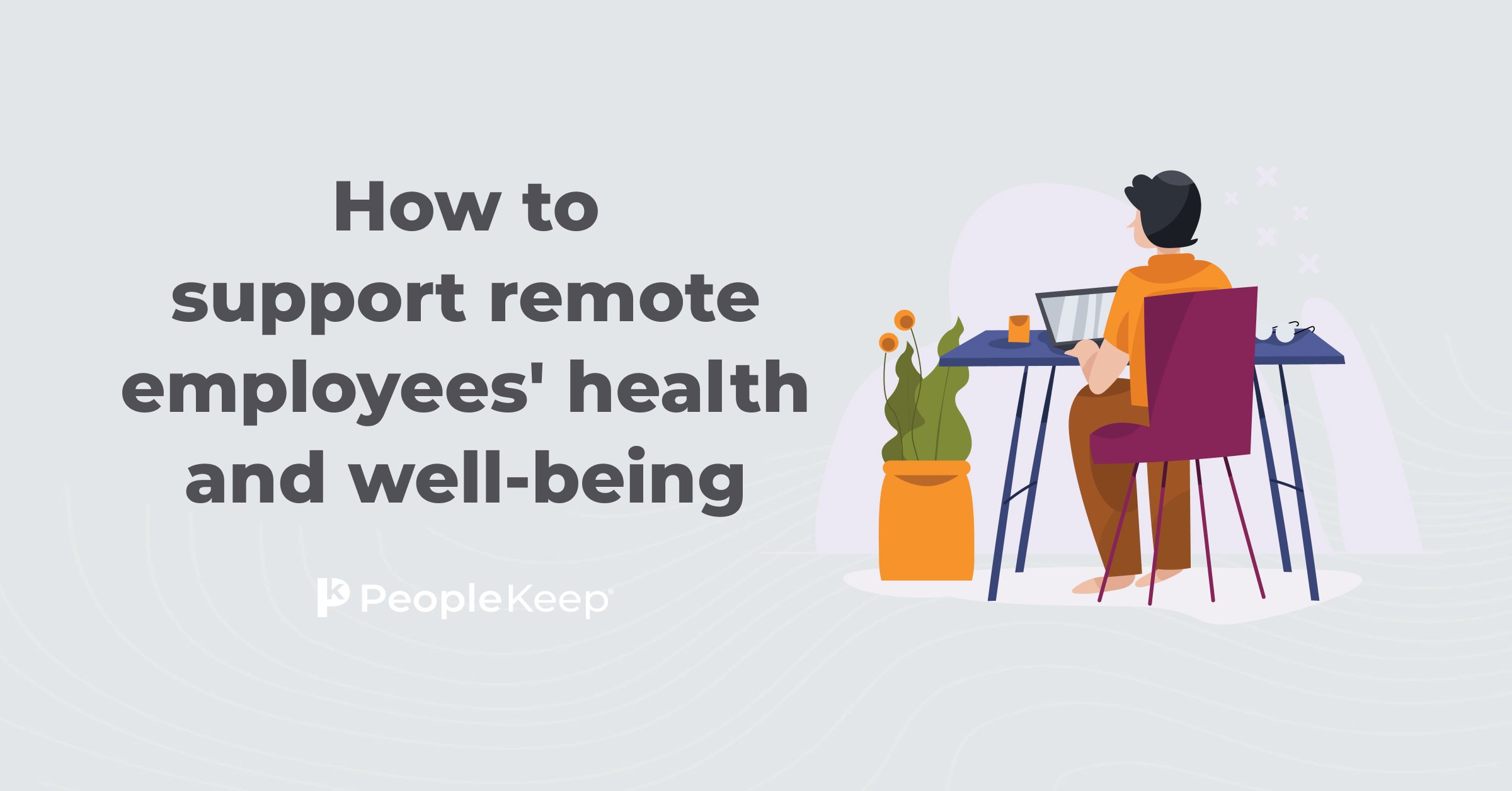What you need to know when your organization goes permanently remote
By Chase Charaba on August 23, 2023 at 7:43 AM
The COVID-19 pandemic forced many employees to quickly shift to remote work setups, transforming bedrooms into home offices and in-person meetings into video calls.
As the world gradually recovers, some companies are considering making this arrangement permanent. According to Zippia1, 37% of Americans are expected to be working from home by 2030.
If your organization is considering this transition, there are several things you need to know to ensure a successful transition to a permanently remote work environment.
In this article, we'll explain why remote work remains popular, share some steps you need to take to confirm your organization is remote-ready, and offer tips on offering benefits to remote employees.
Why businesses are sticking with remote work
While the widespread shift to remote work was born out of a pandemic, many Americans have found that working from home even after the pandemic2 subsided suits them and their employees just fine.
Employees value work-life balance and flexibility more than ever. For many, remote work offers the perfect solution. The Pew Research Center3 found that 71% of remote workers said remote work helps balance their work and personal life.
Employees aren't the only ones enjoying this new way of working. Many employers and corporate decision-makers have fully committed to a long-term, if not permanent, work-from-home policy, saving big4 on costs like office leases, maintenance, and utility bills.
Meanwhile, many more organizations have embraced a hybrid work model where employees have remote and in-office days. Employees may spend a few days per week working from home while they work the remainder of their time in traditional office spaces.
Companies with hybrid work models include:
- Intuit
- Microsoft
- Salesforce
Others, such as outdoor retailer REI5, have closed their corporate offices in favor of remote work and smaller satellite offices.
Why are companies like these letting employees work remotely? A permanent work-from-home policy or hybrid model saves businesses and employees time and money and can increase productivity.
Many workers are also seeking remote job openings, so offering flexibility can be a way to attract top talent.
Before you fully commit to a remote working environment, there are a few things to consider to ensure your organization is ready for a remote work transition.
Develop remote work policies
If you're planning on offering your employees the ability to work from home, you'll need to draft a remote work policy. This allows you to outline where your employees can work, what tools and systems they'll have to use, and how their workday might look.
Can your employees work remotely full-time, or will they occasionally need to have a physical presence at the office or coworking spaces? Will these options be available to your entire workforce or only certain employees? You must set clear expectations before launching into permanent remote or hybrid work.
Alter your communication style to fit a remote environment
Strong communication is the most important tool in a remote business owner's toolkit. After all, a survey of remote employees conducted by Slack6 found that new remote workers are more likely to struggle with communicating effectively and finding the resources they need to do their work.
With office centricity no longer being the norm, you need to adapt to new communication channels in a remote work environment.
It's your responsibility to establish what you want your organization's best practices for effective communication and collaboration to look like in a virtual world. Employees should feel free to send a direct message asking for help or setting up an ad-hoc video call to collaborate on a project.
With a hybrid model, you might have some employees working from home and others working at various office locations. You need to ensure these employees can communicate effectively with each other despite their different schedules and locations.
In addition, you may need to adjust your company-wide communication etiquette policy for your virtual workforce. For example, you may allow your team to mute their notifications when they need some uninterrupted time to get work done. You may also opt for more flexible hours for when your team should be online over strict office hours to allow for more freedom.
Equip your remote teammates with the virtual tools they need
No remote organization is complete without a robust lineup of virtual tools and software to keep its employees productive and organized from home. What work tech you need will vary depending on how your team operates, so consider what tools would make your employees' jobs easier.
For example, managers may need a project management system to help prioritize their team's tasks. Designers may need their own Adobe Creative Cloud license to edit their files. Customer support and sales professionals will likely require a CRM to keep their contacts organized.
Whatever your team looks like, your employees are bound to have unique software needs to do their best work. It's a good idea to check in to ensure everyone has what they need to be successful.
Here are just a few tools we recommend:
- Slack for communication
- Google Workspace or Microsoft Office 365 for creating and storing files
- Google Meet, Microsoft Teams, or Zoom for video calls
- Trello, Monday, or Asana for organizing tasks and ensuring employee productivity
- LastPass or 1Password for password management
Prioritize team building and socialization
Hosting office lunches, birthday parties, and even the occasional ping pong tournament was easy in a physical office. As a remote-first company, you'll have to make a more dedicated effort to ensure your employees have similar opportunities to connect as a virtual team on a personal level and to develop workplace culture.
Whether it's a virtual office book club, online happy hours, or monthly in-person meet-ups, there are countless ways to ensure your employees have a sense of belonging and personal connection with the people they see on their screens daily.
While it may seem trivial, your efforts to improve your employees' social connections and relationships in your remote workplace can go a long way. In a survey conducted by the Science of Care7, 60% of workers who reported feeling cared for by their employer also said they planned to stay with their organizations for three or more years, as opposed to only 7% of those who reported they didn't feel cared for by their employers.
Implement employee benefits that work for everyone
Finally, remote teams want benefits as much as employees working in a physical office. In a tight labor market, employee benefits are essential for keeping your current employees and attracting new remote candidates.
However, operating a remote business often leads to having a workforce that's scattered across the country. If you have employees working remotely in multiple states, it can be tricky to find employee benefits that work for your individual employees and their diverse needs.
Luckily, there are many ways to offer benefits to remote workers that improve job satisfaction and employee retention, such as personalized benefits.
How to offer a health benefit for remote workers
Health insurance is one of the most important benefits you can offer to your employees. According to our 2024 Employee Benefits Survey Report, 92% of remote workers value health benefits.
However, remote workforces require health benefits that work in their location and with their local healthcare providers. You'll want to ensure your health benefits can work for various needs.
There’s a simple way to achieve this. A health reimbursement arrangement (HRA) is an IRS-approved and employer-funded health benefit that allows you to reimburse your employees for their qualifying medical expenses, including premiums for the individual health insurance policies they choose.
Two types of HRAs that fit remote and distributed teams are:
- Qualified small employer HRA (QSEHRA)
- Individual coverage HRA (ICHRA)
A QSEHRA is an excellent option for small hybrid or remote teams. It’s designed specifically for organizations with fewer than 50 full-time equivalent employees (FTEs).
If you have more than 50 FTEs, an ICHRA allows you to provide a personalized health benefit to your remote workforce. Employers can divide their employees into different classes and offer a unique allowance amount for each class so remote-working employees can afford a quality plan from their state or federal Health Insurance Marketplace in their geographic area.
A QSEHRA or an ICHRA is the ideal health benefit for remote employers with a diverse workforce scattered across the country. You can reimburse your employees for their individual health insurance premiums, allowing them to choose the best plan for their needs and location.
Offer stipends and perks to employees
Another option for employee benefits is through monthly fringe benefits or perk stipends. Stipends are fixed allowances provided to employees to help cover various expenses.
For example, you can offer your employees a meal allowance. With it, your employees can purchase their favorite snack, coffee, or sandwich to enjoy while they work. Employees can also meet up virtually to have their lunch together, which builds a sense of community within your organization.
In states like California, where remote work expense reimbursements are required, a remote work stipend can help you reimburse employees for their remote work costs while staying compliant with state laws.
These taxable stipends are easy to administer to employees across the country. This is because fringe benefits and perks typically don't have the same compliance requirements as tax-free benefits. However, the IRS considers most fringe benefits a taxable income, and you must report them on an employee's W-2.
Conclusion
If you're considering switching to a fully remote workforce, you're on trend with many other organizations across the country and the world. As more and more employees have settled into their home offices, following the tips in this article will ensure that your small business has what it takes to be successful in an entirely remote setting on a permanent basis.
Ready to revamp your benefits package for remote work? PeopleKeep can help. With our HRA administration software, you can offer personalized health benefits without the hassle. We'll help you care for your remote workers' health so you can focus on growing your business.
Schedule a call with a personalized benefits advisor today!
This blog article was originally published on June 30, 2021. It was last updated on August 23, 2023.
- https://www.zippia.com/advice/future-of-work-statistics/
- https://www.bloomberg.com/news/articles/2022-01-18/work-from-home-is-becoming-a-permanent-part-of-how-jobs-are-done
- https://www.pewresearch.org/short-reads/2023/03/30/about-a-third-of-us-workers-who-can-work-from-home-do-so-all-the-time/
- https://www.business.com/articles/working-from-home-save-money/
- https://www.rei.com/newsroom/article/rei-co-op-completes-sale-of-bellevue-washington-headquarters
- https://slack.com/intl/en-gb/blog/collaboration/report-remote-work-during-coronavirus
- https://www.limeade.com/wp-content/uploads/2019/09/LimeadeInstitute_TheScienceOfCare_Whitepaper_Web.pdf
Check out more resources
See these related articles

How do taxes work for remote workers?
Understanding taxes for remote workers can be confusing. This comprehensive guide simplifies the process and answers all your questions.

How to support remote employees' health and well-being
Discover strategies for supporting the health and well-being of your remote employees with this comprehensive guide. Start taking care of your team today!

How to offer health insurance to multi-state remote workers
Providing health insurance for remote workers doesn't have to be complicated. Discover the key steps and considerations in this helpful guide.



